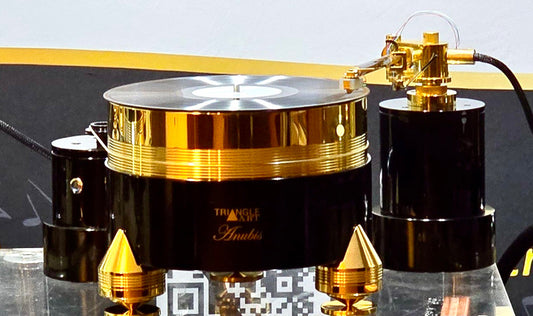Crossover artists seem to become fashionable in waves. Still, there aren’t many who have combined classical chops and a pop sensibility with as much popular and critical success as Tori Amos. What makes this even more surprising is how flagrantly she flaunts her personal oddities. Then again, maybe that’s the secret of her success.
Born in 1963, Amos grew up in Washington, D.C. and was such a wunderkind at the piano that the famed Peabody Institute in Baltimore accepted her at the age of five. While she’s never stopped playing classical music, she quickly became interested in writing her own songs. Or, as she has put it, she is visited by songs in the form of “light creatures” or “light filaments.” The result of these visitations are bizarre but thoughtful and original compositions with an underpinning of sophisticated musicianship.
Ten of her singles and most of her albums have charted, and she’s been nominated for six Grammy Awards. So she’s clearly done something right. And the timing of her career – signing with Atlantic in the early ʼ90s, when many American and British teens were ready for something deeper than synth pop but less hopeless than grunge – could not have been more perfect.
She entered with a splash, releasing her debut, Little Earthquakes, in 1992. Rolling Stone called the newcomer’s songs “smart, melodic, and dramatic; the deeper you listen, the hotter they get.” Amos quickly became known for telling it like it is. Witness the terrifying “Me and a Gun,” about a rape victim alone in the middle of the night, waiting to see her attacker again. The choice to do this a cappella is one of the great lessons in “less is more.”
Of course, most of her songs use instruments, and few are quite so devastating. In a completely contrasting style, the high-energy single “Cornflake Girl,” from Under the Pink (1994), solidified Amos’ mainstream popularity.
But Amos isn’t the sort to fill an album with toe-tappers. After a quiet start with just piano accompaniment, “Cloud on My Tongue” shows why Under the Pink employed so many session musicians. She’s got a whole chamber orchestra working on this track.
The album Boys for Pele (1996) also uses orchestra, but with an unusually Baroque focus on acoustic non-piano keyboards: harmonium, harpsichord, and clavichord. Besides tickling the ivories, Amos set herself another challenge: For several years before this album, she’d been involved with Eric Rosse, who had produced her previous records. Their breakup left her not only without a romance, but also without a producer. Undaunted, Amos produced this one solo for the first time.
Despite being deemed “radio unfriendly,” Boys for Pele charted in both the US and UK. Amos has called the album a “bid for independence,” and has been open about using psychedelic drugs and participating in shamanic rituals while writing it.
Given its unconventional nature, it’s surprising that the album yielded five singles. Among the album-only tracks is “Doughnut Song.” There seem to be at least three types of keyboard going at any given time, ranging from harpsichord to synthesizer.
Amos has a thing for old-school concept albums. Maybe she dreams of being a novelist. In any case, her releases in the 21st century tend toward deep worldbuilding. The concept album Scarlet’s Walk (2002) was Amos’ first release for Epic after splitting with Atlantic. The songs express the point of view of a semi-autobiographical character named Scarlet as she travels America.
Given the timing, it’s no surprise that the 9/11 terror attacks had a big impact on this album. “I Can’t See New York” is devastatingly sad. The melody is layered under electronic sounds and samples like the Manhattan skyline behind a haze of building dust.
Another concept album that would have fit in during the prog rock era, American Doll Posse (2007) integrates songs into a complex fictional world. Amos is listed as one of five composers, the other four being alter egos — women (or “dolls”) of her own invention, inspired by Greek mythology.
For example, the doll named Pip is based on the goddess Athena and described on the liner notes as a “confrontational warrior woman, unafraid and aggressive.” Here’s one of Pip’s songs, “Velvet Revolution,” complete with Greek-influenced rhythms and harmonies. (That’s Mac Aladdin making his mandolin sound like a bouzouki.)
Classical music has become increasingly important in Amos’ compositions. The Deutsche Grammophon label asked her to create a record that used her conservatory training in a profound way. Amos’ answer was Night of Hunters (2011), a set of songs built on pre-existing classical pieces by folks like Bach, Chopin, and Debussy.
The underlying concept of the song cycle is very long and detailed, but this will suffice: A modern woman, recently split from a relationship, has an encounter with creatures and rituals of ancient Ireland. Some of the tracks feature Amos’ daughter, Natasha Hawley, who was only eleven years old, but already an intriguing and powerful singer.
For all its melodramatic nature, Night of Hunters met with critical acclaim. Here’s “Nautical Twilight,” a song based on one of Mendelssohn’s Songs without Words. Mendelssohn’s work is for solo piano; Amos added the vocal line, and arranger John Philip Shenale provided the orchestration.
After several years focused on infusing classical music into her work, Amos was ready for more straightforward pop. In her own peculiarly baroque manner, anyway. First she co-wrote a musical The Light Princess, with Samuel Adamson, which was performed at London’s National Theater in 2013. Then she headed back to the studio.
The title of Unrepentant Geraldines (2014) prepares you for the mix of sardonic humor and anger to be found in its tracks. By “Geraldines,” Amos means women who live their truth no matter what society thinks.
Masterworks of visual art play an important role in some of the songs on this record. According to Amos’ liner notes, “16 Shades of Blue” was inspired by Cézanne’s still-life painting The Black Marble Clock. The lyrics seem to be a commentary on the difficulty of women aging in this society, with lines like “There are those who say you’re too old to play.” Needless to say, Amos isn’t taking that lying down.
Native Invader (2017) is Amos’ most recent album. While she started out intending to write a nature-inspired set of songs in the Smoky Mountains, 2016 brought two types of trauma that she couldn’t sidestep artistically: Her mother had a stroke, and America felt like it was coming apart at the seams politically. Hence the intense album title.
“Bang” uses a fable-like cosmology to express Amos’ belief that we’re all equally insignificant and magnificent. “Immigrants, that’s who we are, ʼcause we’re all made of stars.”



